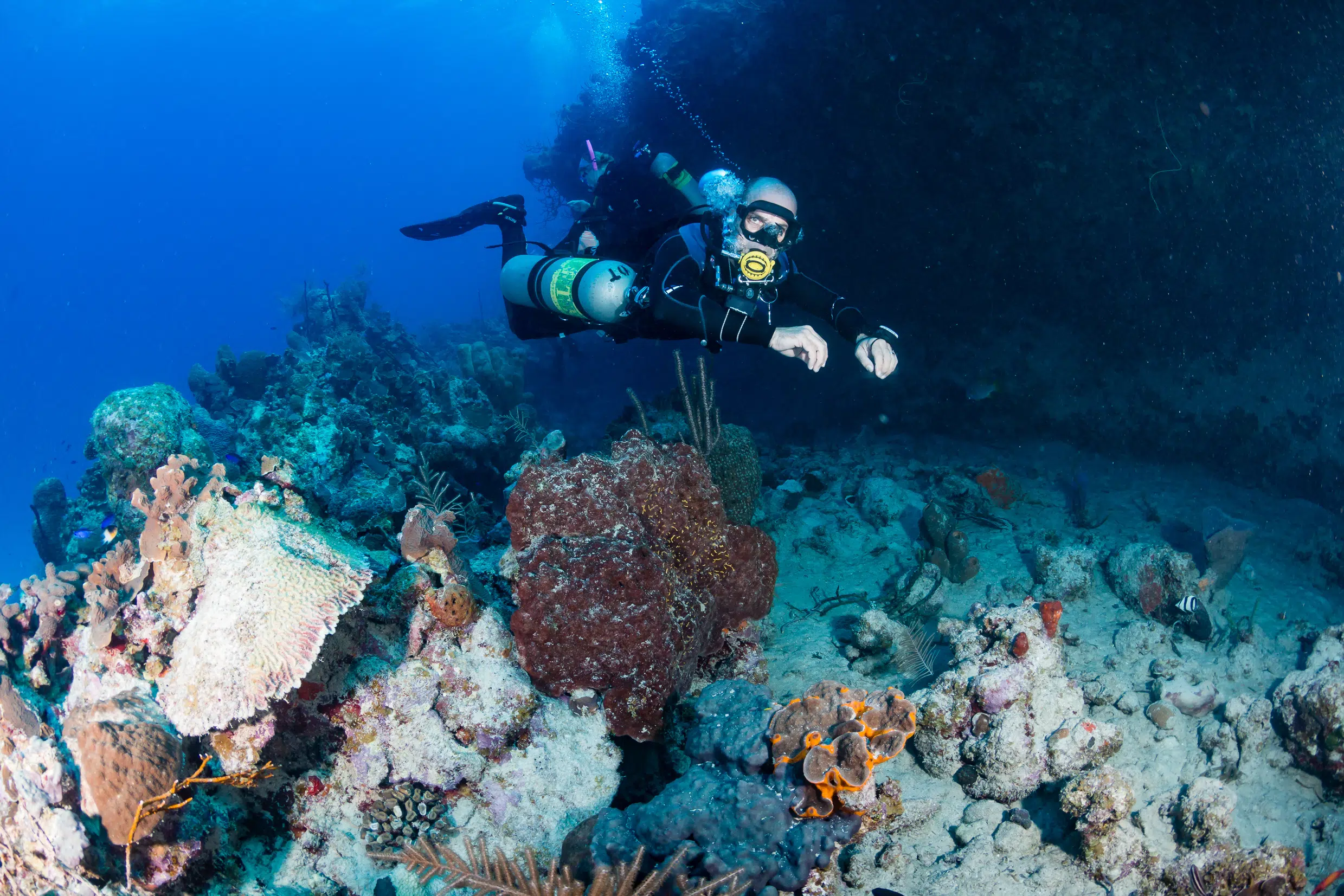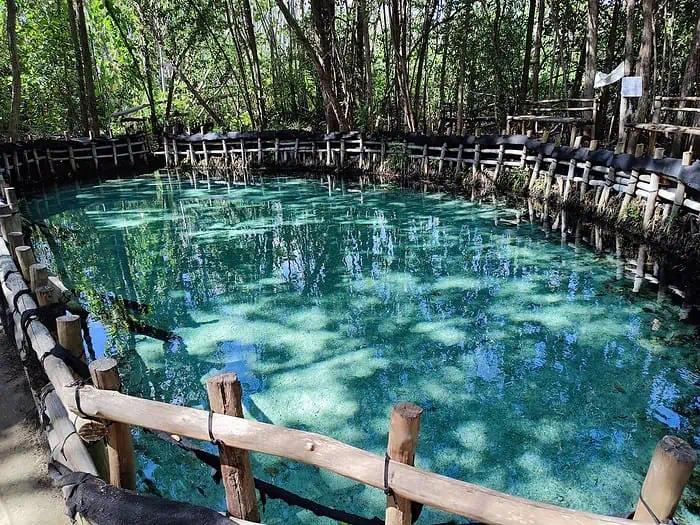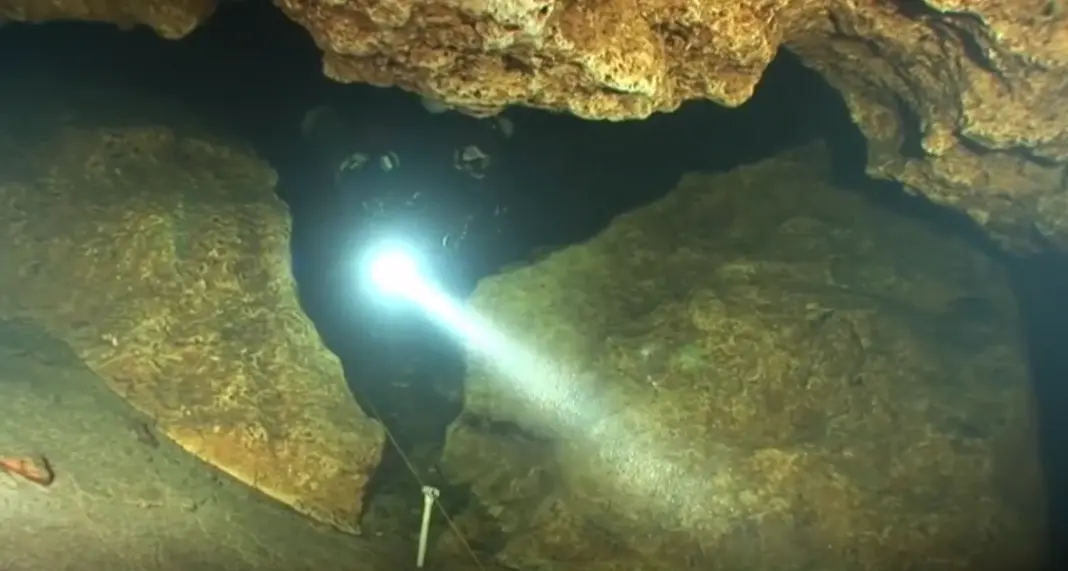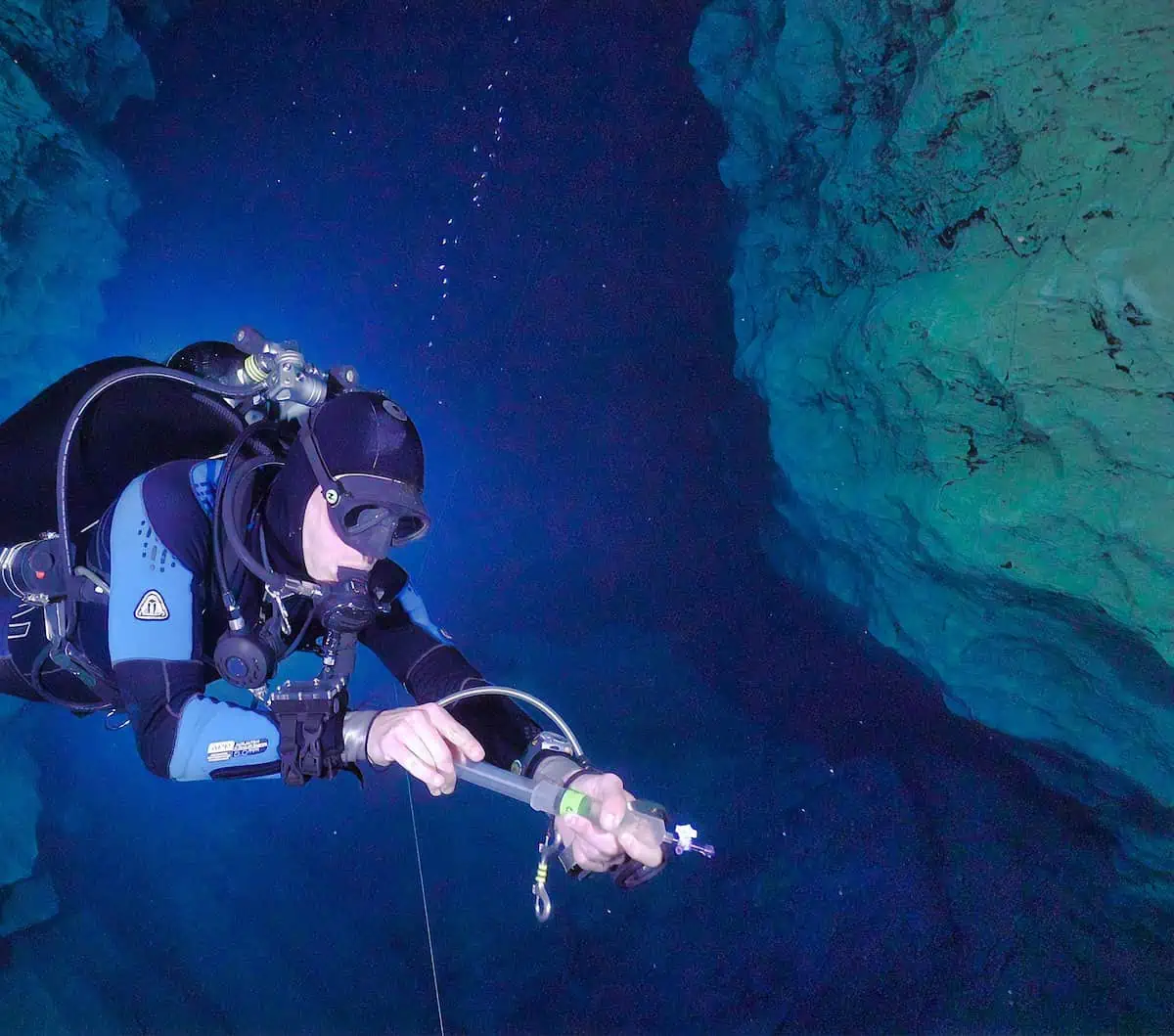Cave Diving is one of the most exhilarating and rewarding activities you can do underwater. That being said, it is not for everyone. Not only does it require the ability to be hyper-focused and organized. You must also be blessed with a certain level of psychological comfort, especially in tight places.
If you are particularly claustrophobic or have nyctophobia (fear of dark/dark places), then cave diving could be your worst nightmare. If not, cave diving is an avenue to untold adventure and exploration. If you pursue cave diving and are fortunate enough, you can be the first human to discover and look at a part of our world, which is an unforgettable experience.
What is Cave Diving?
Cave diving is exploring caves that happen to be submerged underwater. While cave diving is almost a subset of technical diving these days, that has not always been the case. Historically, cave diving originated in caving, potholing, and spelunking. As these explorers drove deeper and deeper underground, they eventually found their dry cave explorations blocked by water. What did these enterprising explorers do? Learn to scuba dive so they can push on and explore what lies ahead; thus, cave diving was born.
That is why the oldest cave diving certification and training protocols do not come from technical diving agencies. Instead, Speleological (Cave science) societies like the National Speleological Society developed most original cave courses. These courses are and remain the gold standard for cave diving training.
Ultimately, cave diving is about exploration; exploring a part of the planet that so few people have seen is a thrill. When exploring the thrill of adding several hundred feet or meters of line to a cave is unparalleled, that feat will be forever yours. The fact that cave diving is dangerous, difficult, and risky makes it extremely rewarding.
Cave Diving Safety and Training
When it comes to cave diving safety, the first and most important thing to remember is never to attempt it without the proper training. If you are on a regular dive, and you see an opening of a cave, look away and keep swimming. Caves are one of the easiest ways for divers without the proper training and equipment to kill themselves.
Cave diving can be so risky that several fully trained and equipped divers perish in accidents every year. Any diver entering a cave or overhead environment without the proper training and equipment asks for trouble. If they do it once and get away with it, it is luck instead of skill.
So, if you still want to cave dive, how do you start your journey? Over the years, the courses on offer have evolved. However, now, the curriculums are broadly standardized across many training agencies.
Broadly speaking, cave diving training is split into three different levels. First comes Cavern Diving. This initial certification serves as an introduction and only allows minimal penetration. Cavern diving means staying within the light zone area at the mouth of the cave or cavern.
Secondly comes the Introduction to Cave Diving. This is your foundation for cave diving and usually only allows restricted penetration and limits on decompression, gas use, staging, etc. The exact standards vary slightly from one training agency to another.
Finally, once you have completed both these courses, you can undertake the full cave diver course. Here, you learn all you need to do to explore caves, and there are minimal restrictions or limits. Once certified, you can penetrate as deep as your experience will allow you to do so safely. But at the end of the day, you make the judgment.
However, the learning never ends, and you can still undertake additional courses, such as using Diver Propulsion Vehicles DPVs, Rebreather cave diving, and so much more.
Essential Cave Diving Equipment
Depending on the type of cave you are diving, the list of cave diving equipment can be endless. However, one principle holds across all cave dives, and that is redundancy. When cave diving, you will always carry multiple backups since, due to the overhead environment, you cannot abort your dive and go to the surface; you must turn back and exit.
As such, cave divers will always carry a minimum of two lights, a primary, and at least one backup torch. However, many divers carry more since no one wants to be stuck in the dark deep in a cave.

Cave divers will also have a minimum of two cylinders with two separate regulators. This configuration is the entry-level bare minimum, and proper planning means that even if you suffered a catastrophic gas loss, you would still have sufficient reserve to get to the exit safely. As the depth and penetration distance increase, the number of cylinders increases alarmingly. Large-scale expeditions can involve hundreds of cylinders being staged for the divers.
Other equipment unique to cave diving is line arrows and cookies, which give directional information to divers, help teams communicate, and account for all team members on a dive.
Unsurprisingly, cave diving uses many lines. These are placed in the cave to give the divers a path to return to the exit and mark the extent of the cave’s exploration. Some lines are designed to be the primary guideline, and others are designed so divers can T-off the main line and head off exploring a side alley they see.
Top Cave Diving Destinations
There are many cave diving destinations around the world. In fact, some places are only famous for cave diving since they are landlocked and do not have regular scuba diving.

By far, the world’s most famous cave diving destination is Mexico. Home to the Yucatan and the legendary cenote. Mexico’s cenotes are unique in that they are massive, and some are so well-explored and lit that you can do some exploration dives without needing full cave training.
This is primarily because many of them have small cracks and openings in the ceilings, giving you a direct ascent to the surface. Whether you want a cave diving taster or a full-blooded technical course exploring the darker recesses of a cave, you cannot go wrong packing your bag and heading out to the cenotes in Mexico.
Keep in mind that there are many destinations with an active and vibrant cave scene. The UK, France, Germany, and Spain all have a big cave diving scene. Some of Eastern Europe’s more exciting and deep caves, with the Hranice Abyss, Europe’s deepest cave in the Czech Republic.
If you are in North America, you cannot go wrong heading to Florida. The state has multiple world-famous cave diving sites, including the legendary Ginnie Springs. Other renowned cave diving spots in Florida include the Devil’s Den and Leon Sinks Geological Area. Not to mention the legendary Woodville Karst Plain Project, where many GUE ideas and principles were born.
Cave Diving Conservation and Ethics
Every time you enter a cave, you create a small disturbance to a very fragile ecosystem, whether on land or in the water. When cave diving, you need to be extra careful not to negatively impact the cave system.
Needless to say, your buoyancy and propulsion skills need to be second to none since a rogue fin kick can be incredibly destructive. Also, make sure you leave nothing behind and that when you lay lines, you are extra careful that they will not impact any of the cave’s resident life forms.
From an ethical standpoint, you must also respect the guidelines and markers placed in the cave by other divers. Even if you disagree with the placement of a line, you should never touch or interfere with guidelines. Doing so can have catastrophic results and lead to a loss of life.


